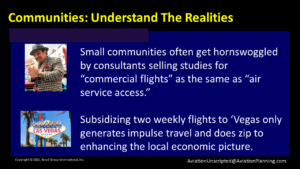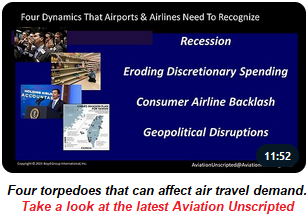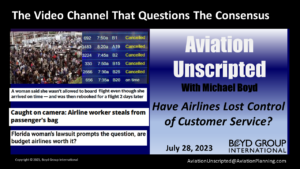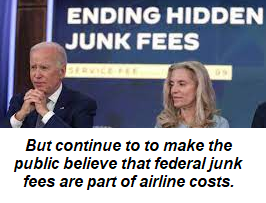Remembering 9/11:
Terrorists Are Not The Main Threat.
It’s Incompetence On This Side That’s The Danger.
The date 9/11/2001 – the worst intelligence failure in history on the part of the US government.
Naturally, it is important to everyone to mark and memorialize 9/11/2001. Except, it appears, the current occupant of the White House. He’ll be busy with other things and will essentially do a phoner instead of being on-site.
The Real Threat Is Having Incompetents In Charge. But the question is whether we are any more secure today. I am not talking about the human waste that inflicted the attack. Instead, the issue is whether we are any safer today from the disgusting people in our government, who before 9/11, in full light of the threats, were intent on telling us how wonderful our aviation security was back then.
What gets lost in the media stories is that they were advised and did nothing. It’s like being told by meteorologists that a hurricane is coming and intentionally ignoring it. That is precisely the scenario with 9/11.
Here’s the bottom line: it’s not just the safety and security systems that are paramount. It’s whether the people in charge are competent. They were not so before 9/11, and it’s more than an open question whether it’s the same today.
 Let me say it again: it’s not the deranged terrorists that are the real threat. It’s having political nincompoops in charge of protecting us from them.
Let me say it again: it’s not the deranged terrorists that are the real threat. It’s having political nincompoops in charge of protecting us from them.
That was the case and the cause of 9/11. Nincompoops were In charge.
Unaccountable nincompoops, to be more precise. Today, just do a YouTube search of the congressional testimony of Secretary of Homeland security, Alejandro Mayorkas, regarding security of our southern border, and it is not comforting. It is downright scary.
We Had Professional Warnings. The official narrative repeated by a compliant media is that we were unexpectedly attacked on 9/11. That is true only in regard to the senior security officials of the FAA, who irresponsibly ignored warnings. See, before the attacks, we had FAA Red Team investigators trying to warn the incompetents above them, right up to seat-warmer Jane Garvey – the FAA administrator. To no avail.
They reported lax security. The moral corruption they faced included outrages like being ordered not to inspect airports without providing notice of their planned arrival.
How about a clear, detailed warning that multiple airliners could be hijacked at Boston? Brian Sullivan, an FAA security inspector, advised his superiors of this in May 2001, months before that nasty Tuesday morning.
It was not just ignored, it was rejected. Frustrated, the findings were independently sent to the offices of Senator John Kerry. The bottom-line response: take it elsewhere.
The issue on the table: are the people in charge of AVSEC any better than the incompetents who were there 22 years ago? Again, any cursory performance review of the current guy in charge of Homeland Security would start some heavy concern.
No Accountability For Criminal Failure. Okay, it’s time for some Q&A which the media mannequins never have bothered with:
Question One: How many of the bureaucrats in charge of the inept aviation security on 9/11 were fired or even reprimanded?
Answer: None. As a matter of record, Bush actually lauded the FAA for its “fine work” – even before the final death count was known.
For the record, after 9/11 the majority of the human protoplasm overseeing AVSEC leading up to the attacks were actually promoted – either within the FAA, or its legislative demon spawn, the Transportation Security Administration.
Jane Garvey has apparently gone on to a career of being a professional mannequin, hired by consulting firms trying to show window-dressing about how connected they are. Disgusting. She was in charge of AVSEC on 9/11. She should have been asked to resign, just as the path taken regarding Admiral Kimmel after December 7.
Question Two: DOT Secretary Norman Mineta made great press in forming a number of “task forces” to investigate and provide input on aviation security needs. How many formal reports were issued?
Answer: Effectively none. The reasons implied was this was for “security reasons.” Sure. The job security of the clowns in charge of AVSEC and Mineta’s own responsibilities. The FAA was under his watch.
Question Three: In light of the truth that FAA Red Team security inspectors were interfered with, and their warnings of potential hijackings were ignored, how much of the “9/11 Commission Report” was dedicated to covering this corruption?
Answer: there was one footnote. The pre-9/11 input from Red Team members Brian Sullivan and Steve Elson was not addressed. Get this: they were the ones who were on-site. Who reported the facts. Who issued warnings. Yet, the political slime in charge of the 9/11 Commission did not include it.
Let’s be honest: the Commission was there to ensure that nobody got politically gored. It was a cover-up to assure that neither Democrats nor Republicans could be fingered as political perps.
Yes, the usual political hacks will declare that statement to be a “conspiracy theory.” They are partially right, but it was the commission itself that was in conspiracy to manage the truth. But it’s no theory.
Question Four: How much independent scrutiny has been applied to the entire issue of the failures leading up to 9/11, and the conclusions of the commission report?
Answer: Not much. In point of truth, the usual suspects in the media have circled the wagons around the 9/11 Commission report, instead of investigating it.
One recent example is the Wall Street Journal. It seems that Vivek Ramaswamy made the observation that he didn’t feel the public was fully informed about the issues surrounding 9/11, and he was not confident that the 9/11 Commission report was reliable.
Well, we just can’t have that kind of heresy, the editorial dragons at the WSJ apparently concluded. They came out with a scathing (albeit factless and vapid) attack on Ramaswamy. With all the arrogance of a third-rate evangelist shouting under some leaky gospel tent warning the attendees of being tossed into the Eternal Fire, the WSJ assured its readers that Ramaswamy was a complete fool, and that the 9/11 Commission report was an outstanding example of fact finding.
It had the condescending righteous tone – and the credibility – of an editorial one might find in the Beijing People’s Daily. Toadies.
Victims of 9/11 Go Beyond New York or Washington or Pennsylvania. On a wider note, while we respectively morn those lost on that day, we also must remember the thousands of our military who lost their lives, tossed into the maw of overseas “anti-terrorist” actions for which today we have nothing to show, except maybe billions of dollars’ worth of military equipment abandoned when Biden skipped and ran out of Afghanistan. (Yes, the deaths and injuries resulting from actions in Iraq and Afghanistan and other distant pestholes come under the 9/11 ledger.)
If we had competent and professional security leadership before 9/11, every one of these human losses could have been avoided.
Bottom Line: Security Starts With Professional Competence. It’s not the amount of placebo baggage screening that’s done at airports. It’s whether there is competence and diligence among the people responsible to anticipate and prepare for future threats. One key example: when security events occur at airports from time to time, in most cases the drill is to just evacuate. No plan, no remediation, just run.
Coverage: Caveat Viewer. On the occasion of the anniversary of 9/11, we can plan on media coverage about how safe and secure we are compared to 9/11. They will point to having a new department of Homeland Security. How more screening is done of airline passengers and baggage. And they will point out that there’s not been a single hijacking in the past two decades.
‘Course the self-righteous network correspondents who will tell us how much security has improved are completely clueless regarding new vulnerabilities. Electrical grids. Internet communication. Pipelines. Choke-point interstate bridges. AI hacking.
What this points out is that Homeland Security and their occasional lapdogs doing the weekly news shows are in a defensive posture – defending themselves against any outside input. But we will now be entertained by an avalanche of sunshine stories replete with the walk and talk B-roll with Mayorkas, who can’t even protect our borders, let alone sophisticated communication channels our society is based upon.
And it will completely smokescreen what’s most important: having accountable and professional security people at the controls.
Just because we can’t carry more than 3 ounces of deodorant through airport check points does not mean we’re safer.
________







